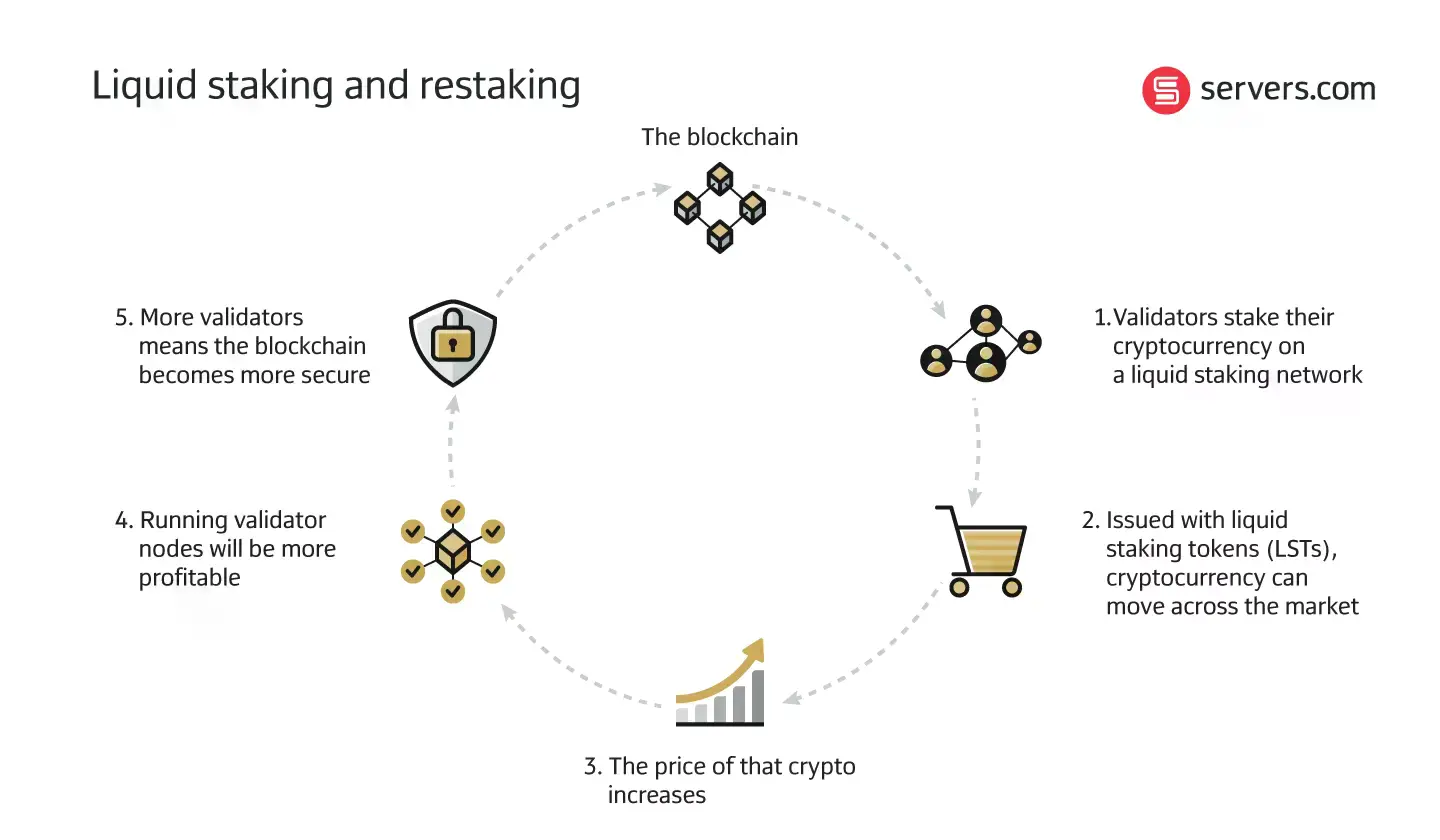

As you do at the end of a year, I’ve been reflecting on conversations I’ve had in 2024 and the one big consistent theme: hybrid infrastructure. Specifically, the market factors over the years that have led to today’s growth in hybrid infrastructure adoption by Web3 companies.
When Bitcoin reached a new all-time high (worth $60,000 for the first time in its history) back in 2021, businesses needed infrastructure that could meet the scaling demands of a bull market. Hyperscale cloud, with its free credits, was the popular choice for many.
But for every bull market a bear market follows, and the subsequent crash meant that many Web3 businesses were struggling for cash. Locked-in to hyperscale cloud and their free credits running out, they couldn’t afford the bills.
In this current bull market, the industry has learned from its previous mistakes, and companies are moving away from hyperscale cloud to futureproof themselves from unsustainable infrastructure costs. They’re finding alternative approaches to scalable hosting, and many are choosing the hybrid infrastructure route.
Solana for example combines bare metal with hyperscale cloud scalability to optimize their costs in preparation for when the markets begin to even out.
Taking this new perspective on infrastructure into 2025, what else can we expect to see this coming year? Here are my top three Web3 trends for 2025.
The main motivation behind these incentives is decentralization. By diversifying data center locations and Web3 hosting providers, blockchains become less dependent on one individual infrastructure provider. In the case of a system failure, a decentralized network of validator nodes is far more protected than a network concentrated in one location from one provider.
But more locations and more providers sound expensive, right? Blockchain networks have come up with a solution to enable this shift from centralized to decentralized infrastructure - subsidizing some of the hosting costs of new data centers for validators.
Let’s say a validator is primarily concentrated in Frankfurt with one provider. A blockchain will incentivize their relocation by covering the costs of setting up their infrastructure (either partly, if not all) in a data center elsewhere or with a different provider.
This is made possible by the foundations of the blockchain networks. Every blockchain network has a foundation to help increase public adoption and subsidizing some of the hosting costs is one of their more recent initiatives. A notable example is the Solana Foundation’s Server Program, where for a monthly fee, a validator can access data center space from approved partners:
“Good servers are a key component of a network’s operations. However, getting access to new servers can sometimes be difficult for individuals. For that reason, the Solana Foundation has advocated on behalf of the Solana validator community with several data center providers across the world in order to offer servers to the Solana ecosystem for lease with flexible, month-to-month contracts.” – The Solana Foundation.
The choice of where those data centers are located is also important. Low latency, close network proximity and a country’s jurisdiction are all factors that should be considered when relocating infrastructure.
Frankfurt, for example, is a blockchain hotspot, with more than 100 Web3 companies operating out of the city. Germany’s regulations are favourable towards cryptocurrency projects, and its central location keeps European networks connected with low latency.
The drawback of this popularity is the sudden flock of businesses into one location, centralizing the blockchain. Validators want to find locations that offer the benefits of Frankfurt, but without the crowd. An area that is untapped gives them a higher chance of being selected to validate transactions, resulting in more frequent rewards.
Heading into 2025, Luxembourg is an area that is currently underutilized, whilst offering all the perks of Frankfurt and therefore growing in popularity. As there is very little presence, hosting infrastructure in Luxembourg is an easy step towards decentralizing a network.
But be quick, Luxembourg going under the radar will not last forever, and I predict the country will eventually become another blockchain hotspot.
Another Web3 keyword of 2024 has been ‘interoperability’, and will no doubt remain so heading into 2025. CasperLab’s report highlights that 78% of businesses surveyed prioritize interoperability in adopting blockchain technology, and 20% of businesses recognize that interoperability is their biggest blockchain adoption hurdle.
Interoperability refers to the divide between on-chain data (stored within the blockchain) and off-chain data (external data or systems), and how easy it is to connect the two. The problem is that many platforms used within blockchains require external data that blockchains can’t access directly. For example, Decentralized Finance (DeFi) applications need to be able to read external market prices to determine the interest rates for lending and borrowing cryptocurrencies.
For businesses who need to bridge this gap, oracle nodes are increasing in popularity. The role of a validator who takes part in an oracle network is to confirm data requests travelling in and out of blockchains. This type of network either accepts or rejects the specific data request by pulling together the separate oracle node validations.
For example: if a doctor needs to gather a patient’s medical records that are stored in the blockchain, they will have to use an oracle node to retrieve it. Similarly, a DeFi platform looking for the price of gold would have to use an oracle node to retrieve that data from the outside world.
And so, the use of oracle nodes is essential. To stay ahead of the curve, Web2 companies are realizing that their adoption of the blockchain must increase. 2024 was a year where 87% of businesses were planning to invest in blockchain. Coupled with how much weight interoperability has in that decision, I predict that oracle nodes will be at the heart of Web3 operations moving forward
The blockchain needs users to stake. Staking allows users to validate transactions on the blockchain – which is why they’re called ‘validators’.
By locking in their crypto assets for a set period of time, validators are deterred from accepting illegitimate data to the blockchain, as the assets they have locked in can be slashed as a penalty. The more validators there are to reject fraudulent data, the more secure and decentralized the blockchain becomes.
But there is a downside to conventional staking. Because these assets are locked up, users are not able to use them in the blockchain for trading, lending or buying. And as the value of these assets is often measured in how widely they are used and adopted, stagnant cryptocurrencies do not benefit from the market activity of the blockchain ecosystem.
Enter my third prediction for 2025: a rise in liquid staking.
Let’s say a user stakes $100 worth of crypto assets into a proof-of-stake network, such as Ethereum, which is now locked. A liquid staking protocol will give the user $100 worth of ETH tokens that can be traded, sold, or lent onto the wider market. These tokens are called Liquid Staking Tokens (LSTs), and they ensure DeFi platforms remain liquid and in-motion. In return, the liquid staking platform charges a fee for the rewards earned from that staked Ethereum.
Further still, is the ability to stake LSTs. By restaking LSTs into other blockchain networks, users can obtain Liquid Restaking Tokens (LRTs). These tokens diversify the placement of their assets and can be used to earn additional rewards from multiple sources, increasing the liquidity of the overall market.
It’s basically one big domino effect. Through liquid staking and restaking, cryptocurrency is moving across the market, which helps prices increase. This means that running validator nodes will be more profitable, which encourages the uptake of validator nodes, and therefore makes the blockchain more decentralized. There is no doubt that because of this, there will be an increased uptake of liquid staking and restaking in 2025.

As we head into 2025, Web3 companies and validators want to get themselves in the best position possible to make the most out of the year ahead. Many analysts are anticipating a bull market that could rival or even exceed that of 2021, and Forbes are even questioning if Bitcoin could reach $1 million next year.
Bitcoin technical analyst CrytpoCon shares this excitement in an X post.
Some people are waiting for 40k or a recession to strike, but I am waiting for the #Bitcoin bull run, which is coming soon.
— CryptoCon (@CryptoCon_) October 18, 2024
The bull run means new ATHs and a year of great price action for all crypto.
The Price Oscillator confirms we have completed all of the local highs of the… pic.twitter.com/eL9DOkvdfE
If these predictions are anything to go by, then it is imperative for businesses to prepare their infrastructure for the rise in demand. Remembering the financial losses from partnering with hyperscale cloud in 2021, I believe a more planned out approach will be taken to balance scalability with cost optimization; chief among them being hybrid infrastructure.
No matter what lies in store for us in 2025, I am confident that by this time next year we will have a greater understanding of how the blockchain will be adopted by those who are currently on the fence. The diversifying of Web3 geography, the uptake of oracle nodes and liquid staking and restaking will each do their part in putting the blockchain on the map even more.
But what do you think? If there’s any Web3 trends you think I’m missing, why not get in touch? I would love to hear your thoughts over on LinkedIn.

Trading and Web3 expert Mike works with customers not just as a hosting provider but a partner to ensure their infrastructure enables future growth. A golf newbie, he's regularly one shot away from selling his clubs.